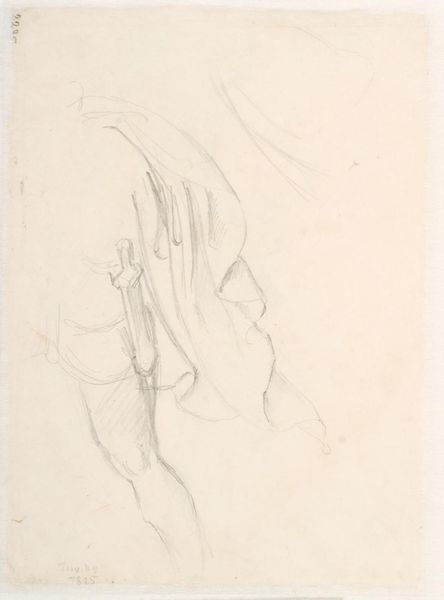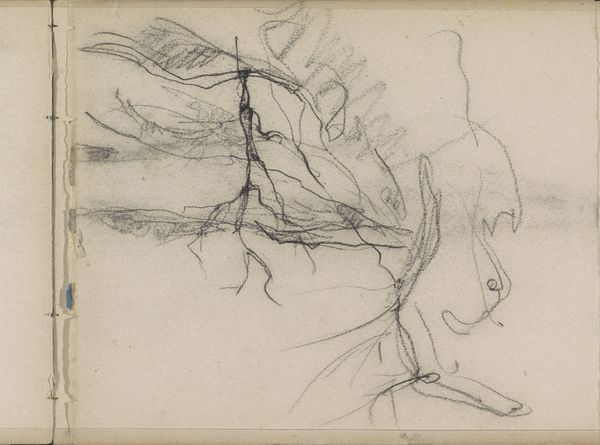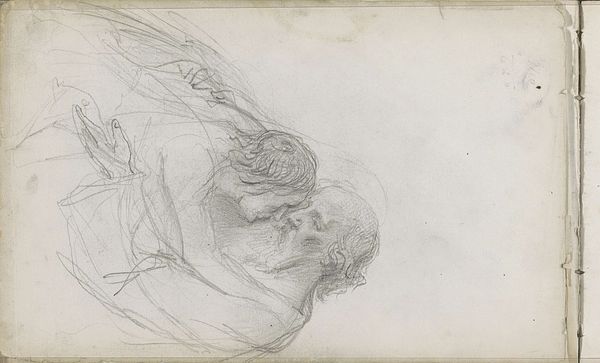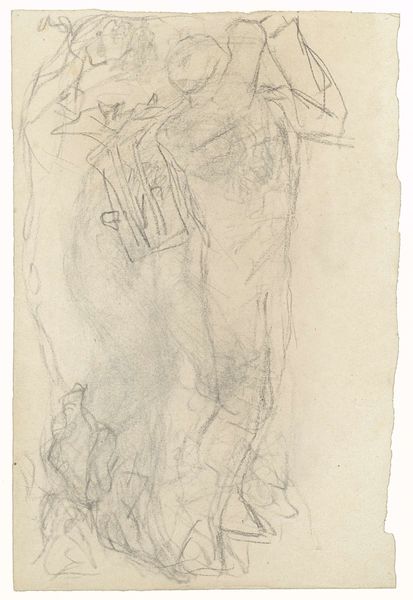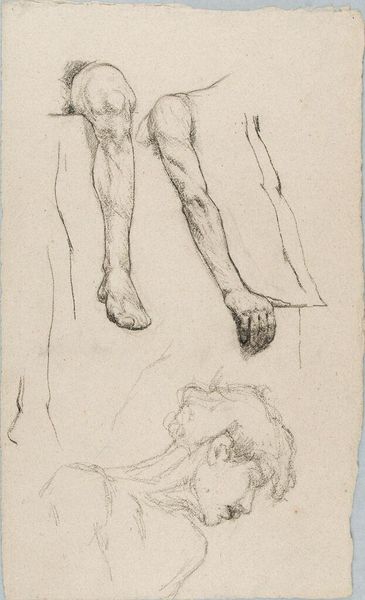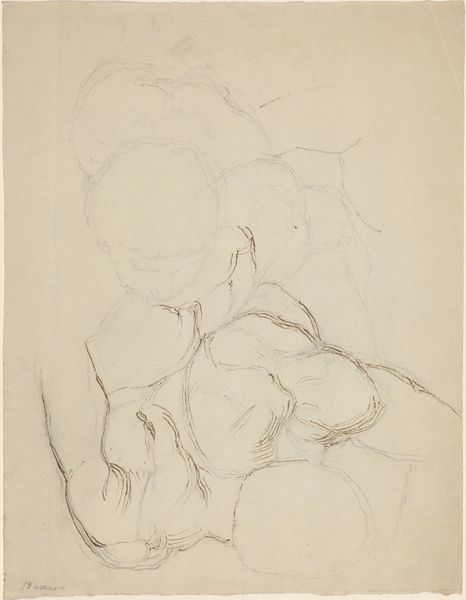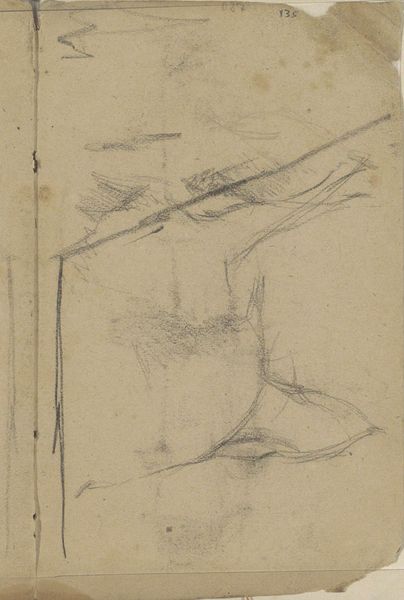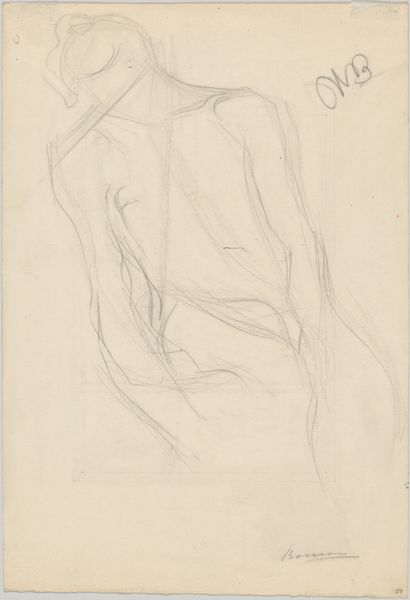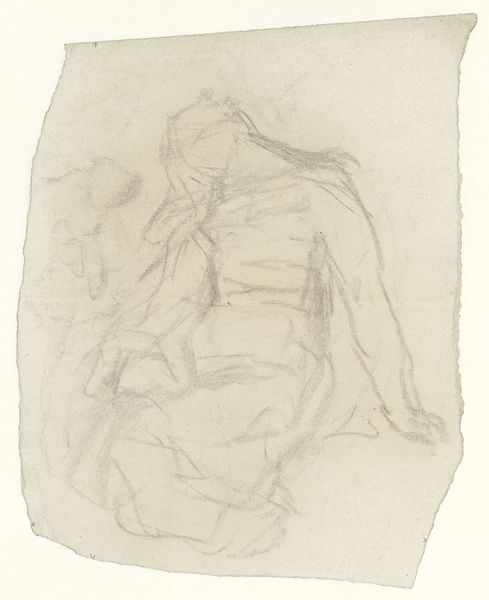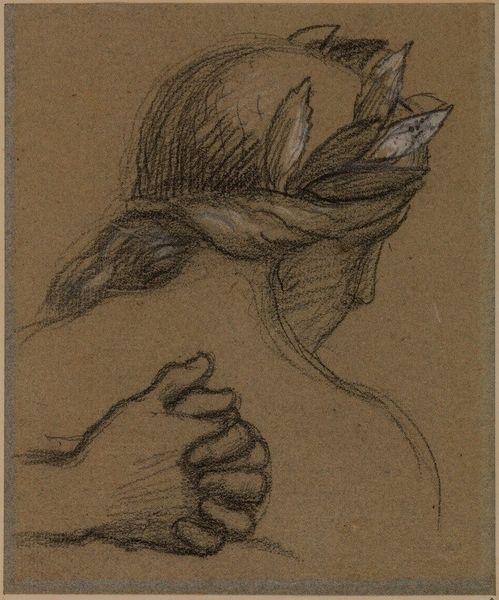
drawing, pencil
#
drawing
#
figuration
#
pencil drawing
#
pencil
#
line
#
surrealism
Copyright: Hans Bellmer,Fair Use
Editor: This "Untitled" drawing, a pencil piece from 1946 by Hans Bellmer, has this ghostly quality, like half-formed memories on paper. The human forms seem distorted and unsettling. What do you make of its imagery? Curator: Bellmer's work often explores themes of the body, particularly the female body, as a fragmented object of desire and anxiety. Given the socio-political context of post-war Europe, particularly in Germany, one can see how this kind of fragmentation resonates with the broader experience of a society grappling with the collapse of social and political order, with the body standing in for the collective trauma of war and its aftermath. Do you see that mirrored here, beyond the Surrealist aesthetic? Editor: That's insightful. The dismembered figures evoke trauma in a way I hadn't considered. I focused so much on the bizarre combinations themselves, I didn’t look outside the drawing itself! Curator: Precisely. Consider how Bellmer exhibited these kinds of works. Not in grand salons of pre-war Paris, but during a period when Surrealism was contending with its place in a new global order. How might the public display and reception of such work differ then, compared to, say, the 1920s? Editor: So, understanding its display changes our interpretation. The initial shock would be compounded by the knowledge of the war’s actual physical and psychological impacts. It gains a political voice! Curator: Exactly! The context shapes how we read it. What first appears to be a personal obsession transforms into a powerful reflection on the shattered state of the human condition. Editor: Wow, I’ll definitely think differently about surrealism from now on, keeping its reception in mind. Thanks for that contextualization!
Comments
No comments
Be the first to comment and join the conversation on the ultimate creative platform.
